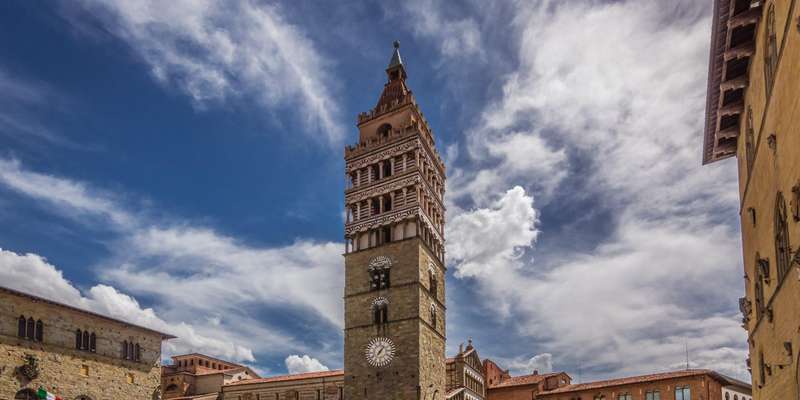- Home
- Useful Tips
- Pistoia's most important...
Pistoia, often overshadowed by its famous Tuscan neighbors, holds some of the most exquisite Renaissance sculptures in Italy. Many travelers miss these artistic treasures due to lack of information or tight schedules, leaving them unaware of the city's rich cultural heritage. With over 70% of day-trippers to Tuscany skipping Pistoia altogether, most never experience the breathtaking works in its cathedral or the Ospedale del Ceppo. The frustration of planning an art-focused itinerary becomes real when guidebooks dedicate mere paragraphs to Pistoia's masterpieces, forcing visitors to choose between rushed visits or missing out entirely. This oversight means travelers often leave without seeing Filippo Brunelleschi's silver altar or the terracotta friezes that define Tuscan Renaissance artistry at its finest.


Navigating Pistoia's compact historic center for maximum art exposure
Pistoia's historic center conceals its Renaissance wonders in a remarkably walkable area, but knowing the optimal route saves precious exploration time. Start at Piazza del Duomo, where three key sites form a perfect art triangle: the Cathedral of San Zeno, its adjacent Baptistery, and the Palazzo dei Vescovi. Morning light beautifully illuminates the cathedral's facade sculptures, while crowds remain thin before 11am. A little-known local tip is to visit the Baptistery's upper gallery first, where you'll get an unobstructed view of Andrea della Robbia's glazed terracotta decorations. From here, it's a 3-minute walk to the Ospedale del Ceppo, home to Giovanni della Robbia's colorful frieze depicting the Seven Works of Mercy. Time your visit for weekdays when school groups are less likely to crowd the loggia.
Decoding Pistoia Cathedral's silver altar – a Renaissance masterpiece
The Altar of Saint James in Pistoia Cathedral represents one of Tuscany's most significant yet overlooked silver works, requiring proper context to fully appreciate. Crafted over two centuries starting in 1287, the altar showcases how Renaissance artists like Brunelleschi and Antonio del Pollaiuolo transformed medieval traditions. Most visitors miss the delicate storytelling in the 628 individual silver figures because they don't know to request the special lighting (available by asking the sacristan). The central panel depicting Saint James' martyrdom reveals Brunelleschi's early experiments with perspective that would later define his Florence cathedral dome. For deeper understanding, position yourself at a 45-degree angle to see how the silver relief changes with light – a technique local art students use to study the work's dimensionality. The adjacent Museo Capitolare displays preparatory drawings that make the altar's creation process come alive.
The Ospedale del Ceppo frieze – understanding della Robbia's colorful narrative
Giovanni della Robbia's 1529 terracotta frieze at Ospedale del Ceppo offers one of Tuscany's most vibrant Renaissance narratives, yet its symbolic details often go unnoticed. The 183-foot long polychrome masterpiece depicts charitable acts with botanical precision – pomegranates symbolizing charity, ivy representing eternal care. Morning visitors catch the eastern light enhancing the blue-glazed background, while late afternoons warm the figures' skin tones. Few notice the frieze's chronological progression from left to right, showing increasingly complex acts of mercy. Local art historians suggest starting from the right end (closest to the hospital entrance) to appreciate how della Robbia's style evolves along the length. The recently restored central arch reveals originally bright pigments that change perception of Renaissance color use. For photography, stand back near the opposite sidewalk to capture the frieze's full scope without distortion.
Beyond the highlights – uncovering Pistoia's lesser-known Renaissance gems
Pistoia's secondary churches hold astonishing Renaissance sculptures most travelers miss, requiring local knowledge to find. Sant'Andrea Church houses Giovanni Pisano's pulpit (1298-1301), a precursor to Renaissance naturalism with its emotionally charged figures – arrive at opening time when sunlight angles perfectly through the nave windows. The nearby San Giovanni Fuorcivitas boasts a rare glazed terracotta Visitation by Luca della Robbia, best viewed when the church's artificial lights activate automatically (every 30 minutes). For a truly hidden experience, seek out the Palazzo Comunale's second-floor Sala Maggiore, where 15th-century fresco fragments show early Renaissance perspective experiments. These off-radar sites require no tickets or reservations, just awareness of their unmarked locations and ideal viewing times. A little-known shortcut connects all three via Vicolo degli Armonici, a medieval alley avoiding the main tourist flow.
